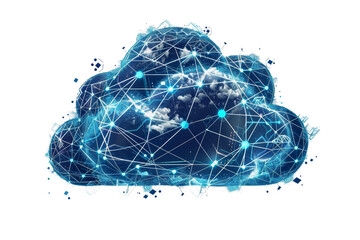Cloud Monitoring vs. Traditional Monitoring: Key Differences
Cloud Monitoring is a crucial aspect of managing modern IT infrastructures, especially as organizations increasingly rely on cloud services for their operations. It involves the continuous observation, evaluation, and management of cloud-based applications, services, and infrastructure to ensure optimal performance, availability, and security.
What is Cloud Monitoring?
Cloud monitoring is the process of using automated tools and techniques to track the performance, health, and availability of cloud resources. This includes monitoring servers, databases, applications, and other services hosted in the cloud. The primary goal is to detect and resolve issues before they impact end-users, ensuring a seamless and efficient operation1.
Key Components of Cloud Monitoring
1. Performance Monitoring: This involves tracking the performance metrics of cloud resources, such as CPU usage, memory utilization, disk I/O, and network latency. By monitoring these metrics, organizations can identify performance bottlenecks and optimize resource allocation2.
2. Availability Monitoring: Ensuring that cloud services are available and accessible to users is critical. Availability monitoring involves checking the uptime and responsiveness of cloud services. Tools can send alerts if a service goes down or if there are significant delays in response times3.
3. Security Monitoring: Cloud environments are susceptible to various security threats. Security monitoring involves tracking access logs, detecting unauthorized access attempts, and ensuring compliance with security policies. This helps in identifying and mitigating potential security breaches4.
4. Cost Monitoring: Cloud services are billed based on usage, making cost monitoring essential. By tracking resource usage and associated costs, organizations can optimize their cloud spending and avoid unexpected expenses2.
Benefits of Cloud Monitoring
1. Proactive Issue Resolution: Cloud monitoring tools can detect anomalies and potential issues in real-time, allowing IT teams to address them before they escalate into major problems. This proactive approach minimizes downtime and ensures a smooth user experience3.
2. Enhanced Security: Continuous monitoring of security metrics helps in identifying vulnerabilities and potential threats. This enables organizations to implement timely security measures and protect sensitive data4.
3. Cost Optimization: By monitoring resource usage and costs, organizations can identify underutilized resources and optimize their cloud spending. This helps in reducing operational costs and improving overall efficiency2.
4. Improved Performance: Performance monitoring helps in identifying and resolving performance bottlenecks, ensuring that cloud services run efficiently. This leads to better application performance and user satisfaction.
Best Practices for Cloud Monitoring
1. Define Clear Metrics: Identify the key performance indicators (KPIs) that are critical for your cloud environment. This includes metrics related to performance, availability, security, and costs.
2. Automate Monitoring: Use automated tools to continuously monitor cloud resources. Automation reduces the risk of human error and ensures consistent monitoring3.
3. Set Up Alerts: Configure alerts for critical metrics to receive notifications when thresholds are breached. This enables quick response to potential issues4.
4. Regularly Review and Update: Cloud environments are dynamic, and monitoring strategies should be regularly reviewed and updated to adapt to changing requirements1.
In conclusion, cloud monitoring is an essential practice for managing cloud-based infrastructures. It provides valuable insights into the performance, availability, security, and costs of cloud services, enabling organizations to optimize their operations and deliver a seamless user experience.
Cloud Monitoring vs. Traditional Monitoring: Key Differences
Cloud Monitoring is a crucial aspect of managing modern IT infrastructures, especially as organizations increasingly rely on cloud services for their operations. It involves the continuous observation, evaluation, and management of cloud-based applications, services, and infrastructure to ensure optimal performance, availability, and security.
What is Cloud Monitoring?
Cloud monitoring is the process of using automated tools and techniques to track the performance, health, and availability of cloud resources. This includes monitoring servers, databases, applications, and other services hosted in the cloud. The primary goal is to detect and resolve issues before they impact end-users, ensuring a seamless and efficient operation1.
Key Components of Cloud Monitoring
1. Performance Monitoring: This involves tracking the performance metrics of cloud resources, such as CPU usage, memory utilization, disk I/O, and network latency. By monitoring these metrics, organizations can identify performance bottlenecks and optimize resource allocation2.
2. Availability Monitoring: Ensuring that cloud services are available and accessible to users is critical. Availability monitoring involves checking the uptime and responsiveness of cloud services. Tools can send alerts if a service goes down or if there are significant delays in response times3.
3. Security Monitoring: Cloud environments are susceptible to various security threats. Security monitoring involves tracking access logs, detecting unauthorized access attempts, and ensuring compliance with security policies. This helps in identifying and mitigating potential security breaches4.
4. Cost Monitoring: Cloud services are billed based on usage, making cost monitoring essential. By tracking resource usage and associated costs, organizations can optimize their cloud spending and avoid unexpected expenses2.
Benefits of Cloud Monitoring
1. Proactive Issue Resolution: Cloud monitoring tools can detect anomalies and potential issues in real-time, allowing IT teams to address them before they escalate into major problems. This proactive approach minimizes downtime and ensures a smooth user experience3.
2. Enhanced Security: Continuous monitoring of security metrics helps in identifying vulnerabilities and potential threats. This enables organizations to implement timely security measures and protect sensitive data4.
3. Cost Optimization: By monitoring resource usage and costs, organizations can identify underutilized resources and optimize their cloud spending. This helps in reducing operational costs and improving overall efficiency2.
4. Improved Performance: Performance monitoring helps in identifying and resolving performance bottlenecks, ensuring that cloud services run efficiently. This leads to better application performance and user satisfaction.
Best Practices for Cloud Monitoring
1. Define Clear Metrics: Identify the key performance indicators (KPIs) that are critical for your cloud environment. This includes metrics related to performance, availability, security, and costs.
2. Automate Monitoring: Use automated tools to continuously monitor cloud resources. Automation reduces the risk of human error and ensures consistent monitoring3.
3. Set Up Alerts: Configure alerts for critical metrics to receive notifications when thresholds are breached. This enables quick response to potential issues4.
4. Regularly Review and Update: Cloud environments are dynamic, and monitoring strategies should be regularly reviewed and updated to adapt to changing requirements1.
In conclusion, cloud monitoring is an essential practice for managing cloud-based infrastructures. It provides valuable insights into the performance, availability, security, and costs of cloud services, enabling organizations to optimize their operations and deliver a seamless user experience.







